Methods of using N-containing compounds with carbon black to replace pan and form carbon fibers
Kemp , et al. Oc
U.S. patent number 10,442,934 [Application Number 15/537,241] was granted by the patent office on 2019-10-15 for methods of using n-containing compounds with carbon black to replace pan and form carbon fibers. This patent grant is currently assigned to STC.UNM. The grantee listed for this patent is STC.UNM. Invention is credited to Richard Alan Kemp, Mahmoud Reda Taha.
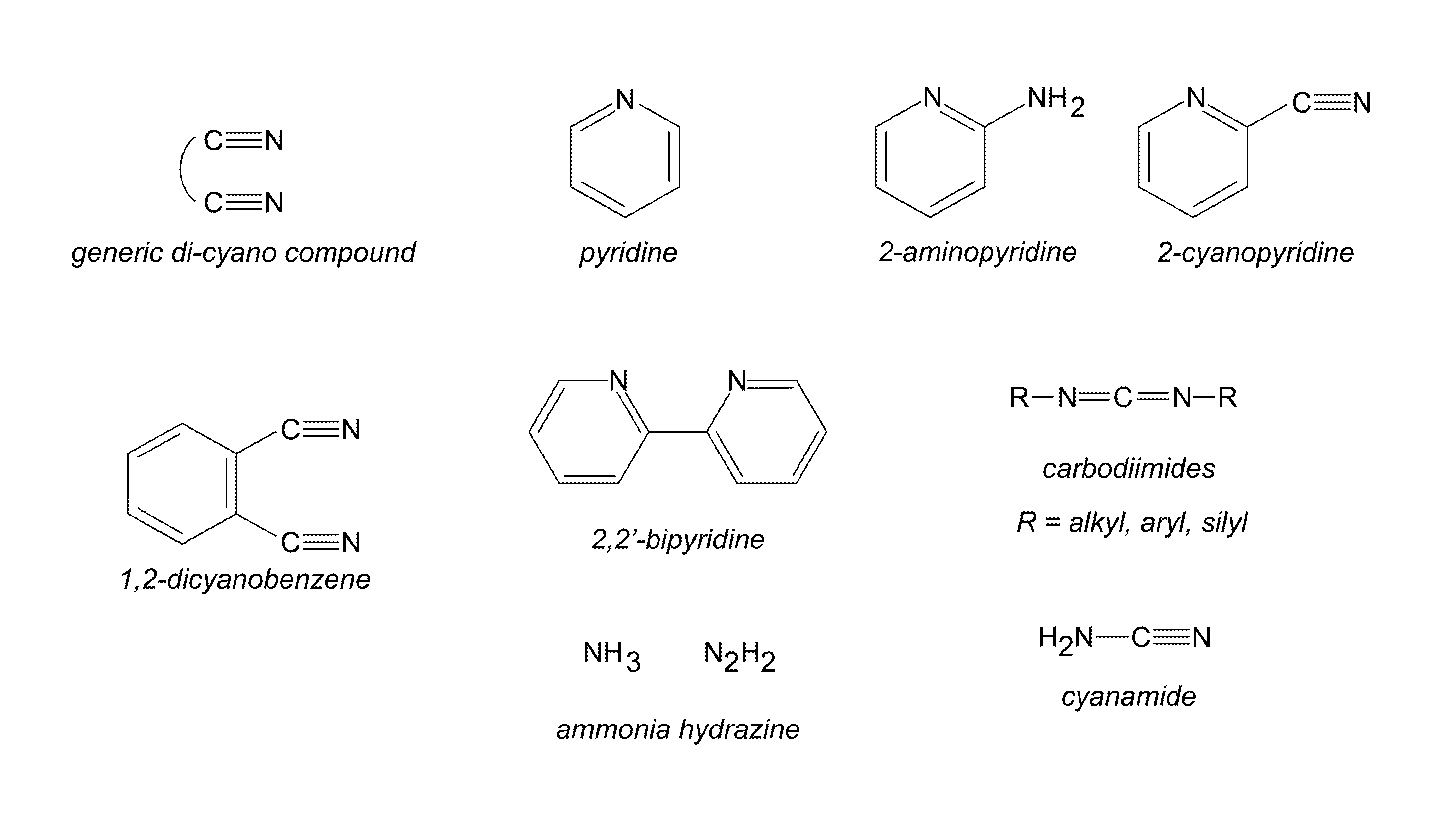

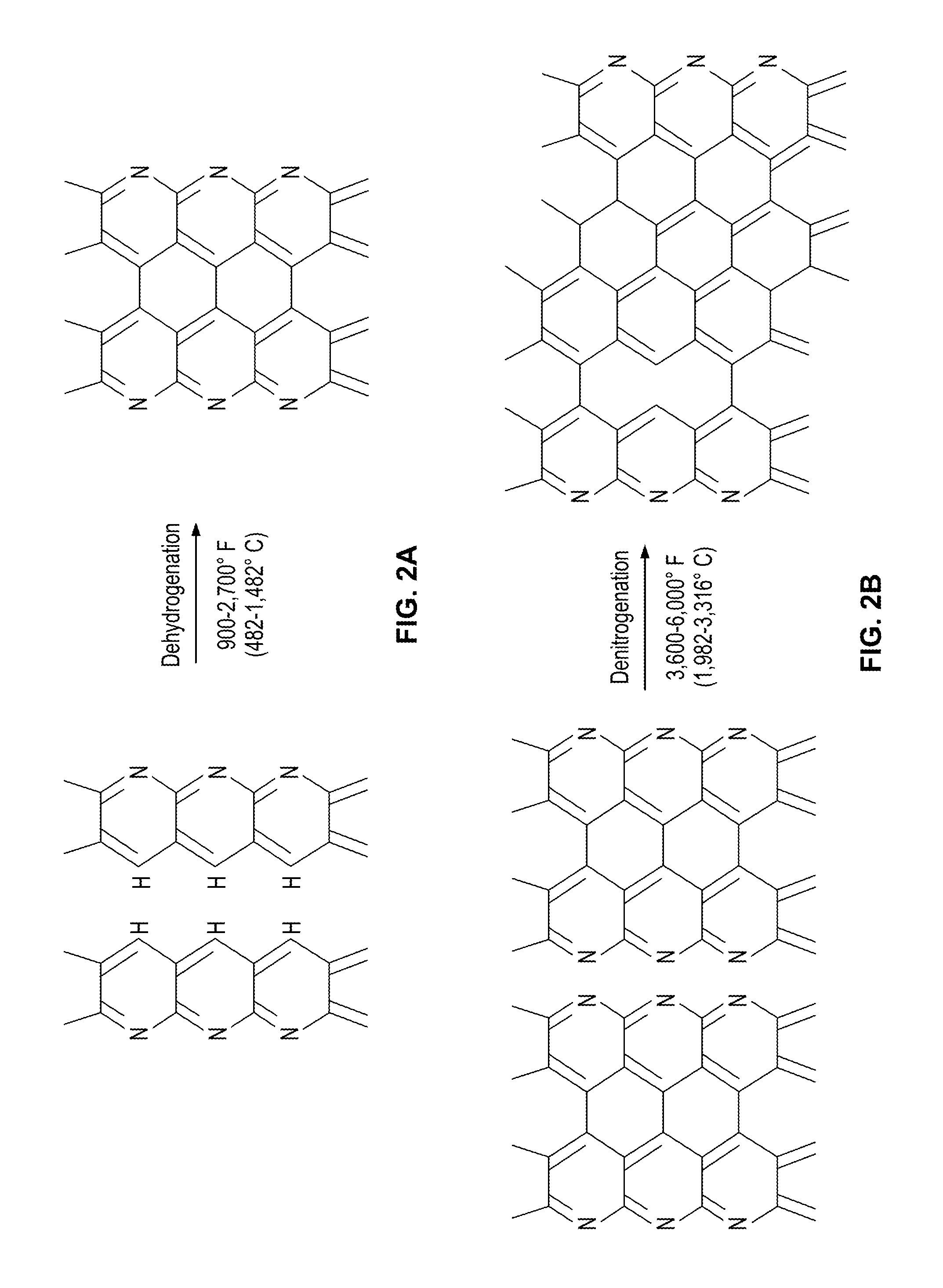
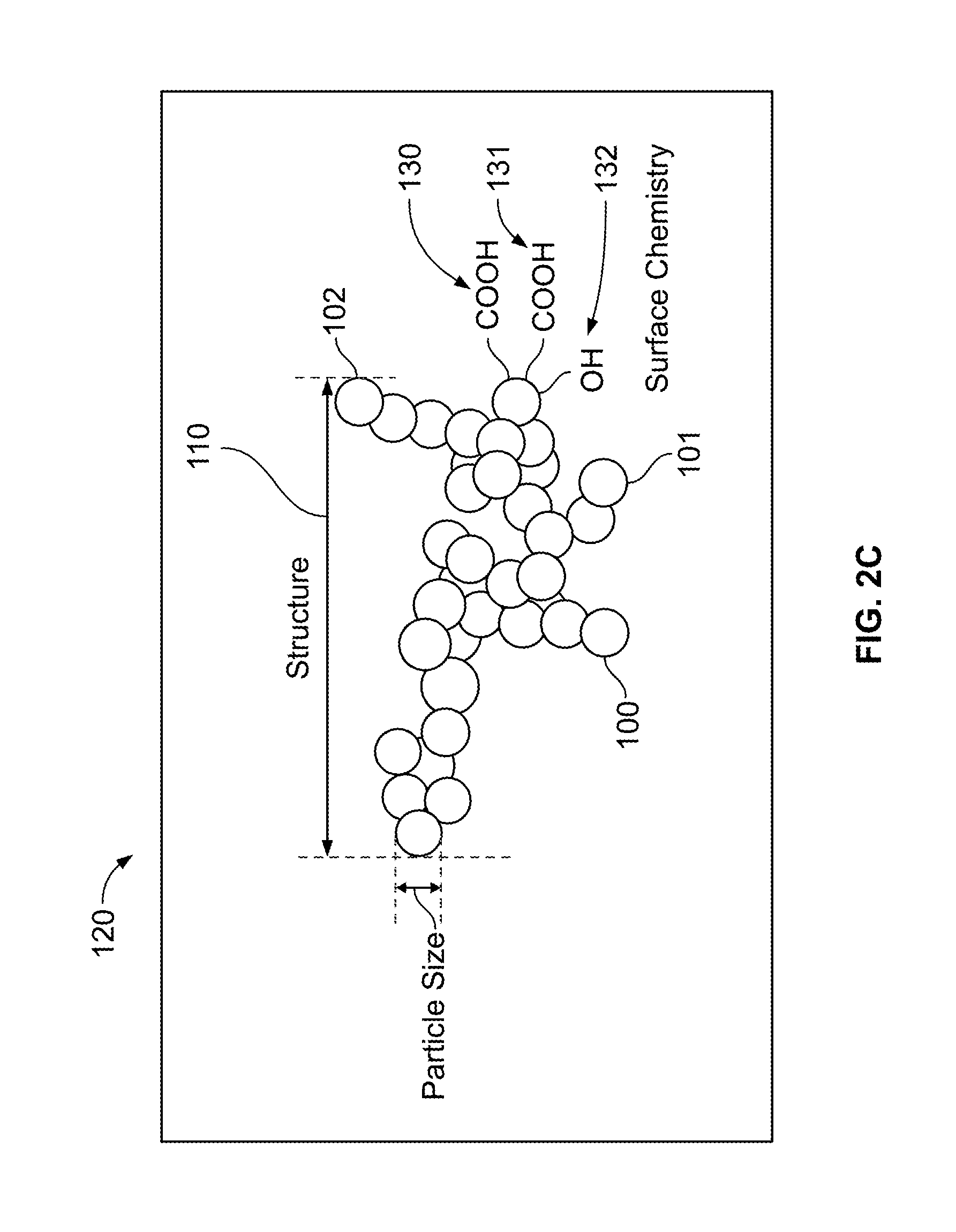
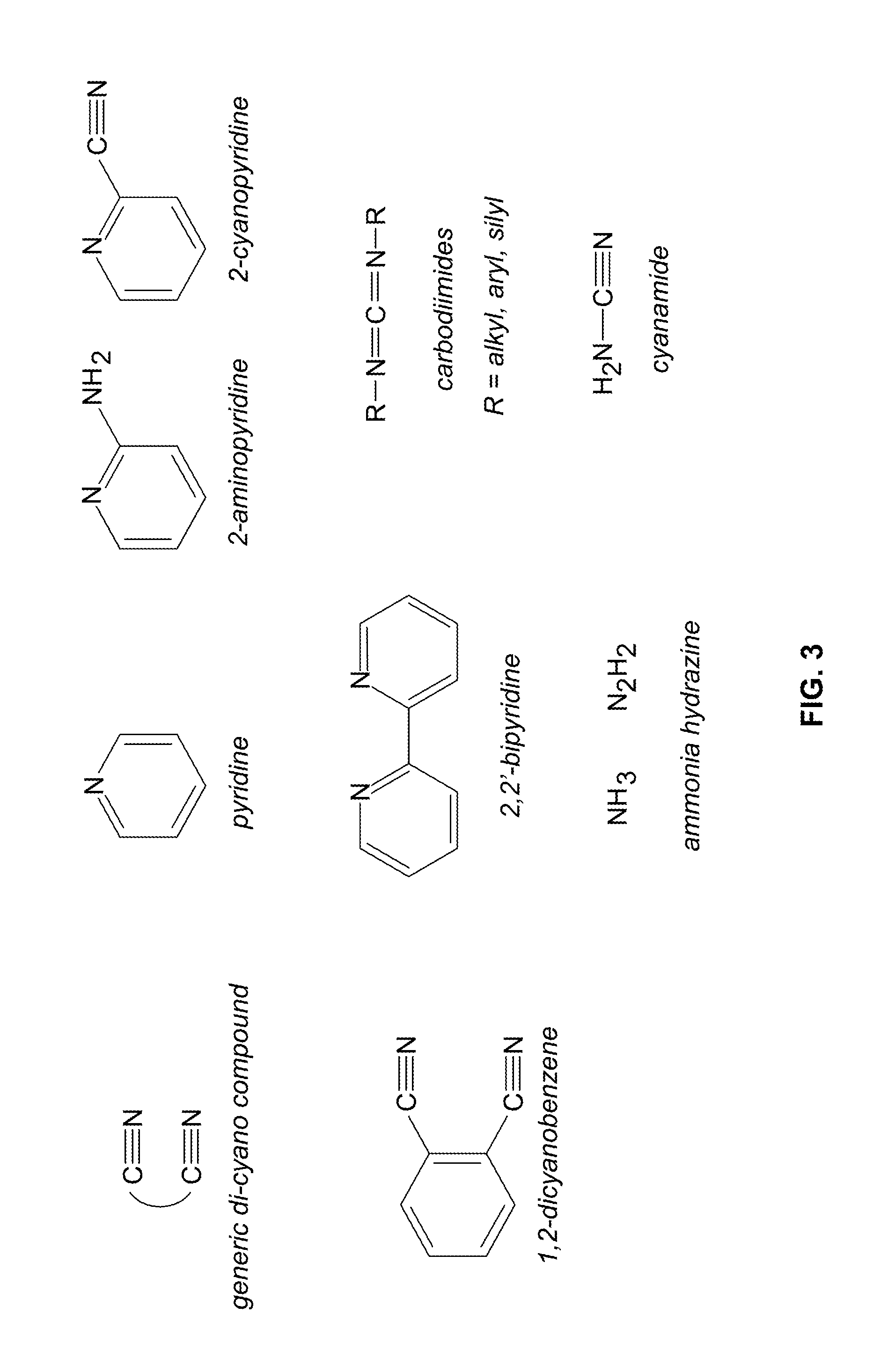
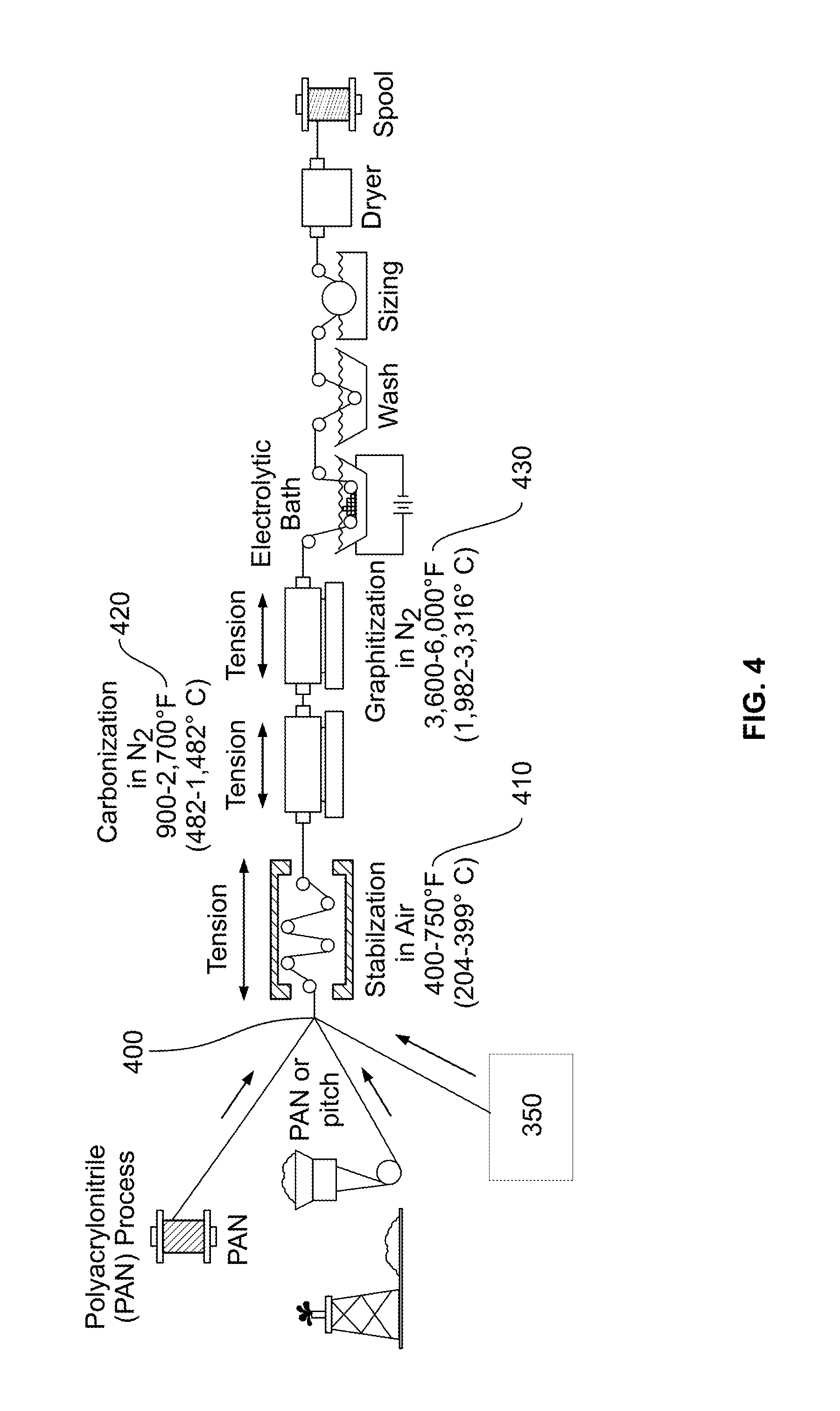
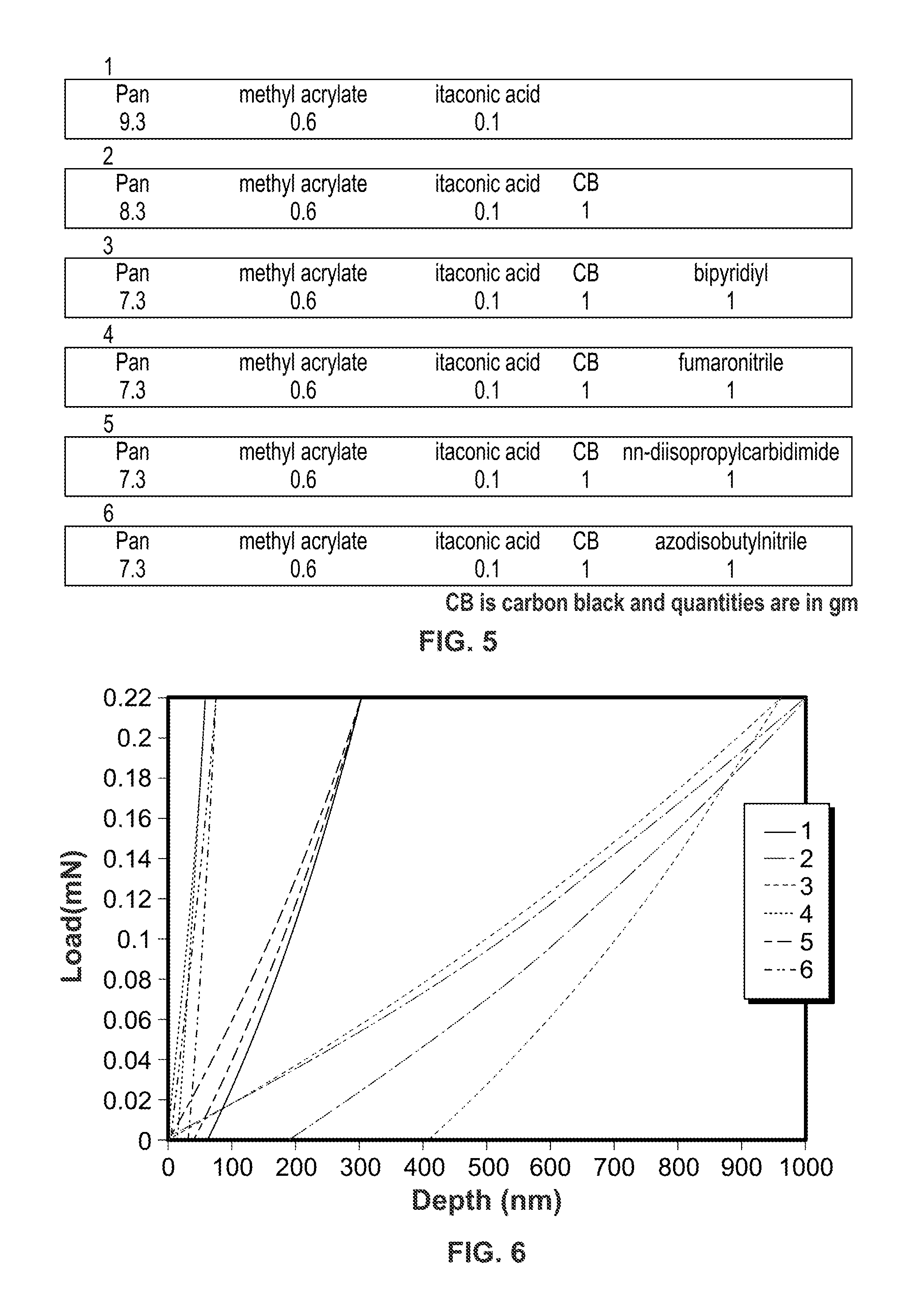


| United States Patent | 10,442,934 |
| Kemp , et al. | October 15, 2019 |
Methods of using N-containing compounds with carbon black to replace pan and form carbon fibers
Abstract
A method and precursor for making carbon fibers and the like comprising carbon black modified with at least one cyclic compound promoter. A source of the carbon black may be recycled materials such as recycled tires or recycled plastics. The carbon black is modified by attaching at least one cyclic compound promoter to the outer periphery of the carbon black.
| Inventors: | Kemp; Richard Alan (Albuquerque, NM), Taha; Mahmoud Reda (Albuquerque, NM) | ||||||||||
|---|---|---|---|---|---|---|---|---|---|---|---|
| Applicant: |
|
||||||||||
| Assignee: | STC.UNM (Albuquerque,
NM) |
||||||||||
| Family ID: | 56127700 | ||||||||||
| Appl. No.: | 15/537,241 | ||||||||||
| Filed: | December 18, 2015 | ||||||||||
| PCT Filed: | December 18, 2015 | ||||||||||
| PCT No.: | PCT/US2015/066769 | ||||||||||
| 371(c)(1),(2),(4) Date: | June 16, 2017 | ||||||||||
| PCT Pub. No.: | WO2016/100863 | ||||||||||
| PCT Pub. Date: | June 23, 2016 |
Prior Publication Data
| Document Identifier | Publication Date | |
|---|---|---|
| US 20170362441 A1 | Dec 21, 2017 | |
Related U.S. Patent Documents
| Application Number | Filing Date | Patent Number | Issue Date | ||
|---|---|---|---|---|---|
| 62094330 | Dec 19, 2014 | ||||
| Current U.S. Class: | 1/1 |
| Current CPC Class: | D01F 9/225 (20130101); C08F 120/44 (20130101); D01F 9/21 (20130101); D01F 9/1275 (20130101); C09C 1/48 (20130101); C09C 1/482 (20130101); D01F 1/10 (20130101) |
| Current International Class: | C09C 1/00 (20060101); C09C 1/48 (20060101); C08F 120/44 (20060101); D01F 1/10 (20060101); D01F 9/21 (20060101); D01F 9/22 (20060101); D01F 9/127 (20060101) |
References Cited [Referenced By]
U.S. Patent Documents
| 4275051 | June 1981 | Barr |
| 4572813 | February 1986 | Arakawa |
| 2002/0031663 | March 2002 | Yu |
| 102214516 | Oct 2011 | CN | |||
| 2003089971 | Mar 2003 | JP | |||
Other References
|
Korean Intellectual Property Office; International Search Report & Written Opinion for PCT/US2015/066769; dated Apr. 4, 2016; 12 pages; Daejeon, KR. cited by applicant . Baker et al; Recent Advances in Low-Cost Carbon Fiber Manufacture from Lignin; Journal of Applied Polymer Science, 2013, vol. 130, No. 2, pp. 713-728. cited by applicant . Maldonado et al; Direct preparation of carbon nanofiber electrodes via pyrolysis of iron (II) phthalocyanine: electrocatalytic aspects for oxygen reduction; Journal of Physical Chemistry B, 2004; vol. 108, No. 31, pp. 11375-11383. cited by applicant . Huang, Xiaosong; Fabrication and properties of carbon fibers; Materials, 2009, vol. 2, No. 4; pp. 2369-2403. cited by applicant . Zhang et al.; Nano-carbon black filled lyocell fiber as a precursor for carbon fiber; Journal of Applied Polymer Science, 2006, vol. 99, issue 1, pp. 65-74. cited by applicant . Lalande et al; Catalytic activity and stability of heat-treated iron phthalocyanines for the electroreduction of oxygen in polymer electrolyte fuel cells; Journal of Power Sources, 1996, vol. 61, Nos. 1-2, pp. 227-237. cited by applicant. |
Primary Examiner: Rump; Richard M
Attorney, Agent or Firm: Keith Vogt, Ltd. Vogt; Keith A.
Parent Case Text
RELATED APPLICATIONS
This application claims the benefit of U.S. Provisional Application No. 62/094,330 filed on Dec. 19, 2014 and herein incorporated by reference.
Claims
What is claimed is:
1. A method of making carbon fibers by providing a precursor used to make the carbon fiber, said precursor comprising carbon black modified with at least one cyclic compound promoter and PAN, said at least one cyclic compound promoter is a nitrogen (N)-containing compound wherein said precursor contains around 7 parts PAN and around 1 part carbon black.
2. The method of claim 1 wherein said N-containing compound contains cyano-groups that simulate the cyano group cyclization process.
3. The method of claim 1 wherein the precursor further comprises methyl acrylate, itaconic acid and fumaronitrile.
4. The method of claim 3 wherein the ratio of methyl acrylate to itaconic acid and fumaronitrile is .about.0.6:.about.0.1.about.1.
5. A method of making carbon fibers by providing a precursor used to make the carbon fiber, said precursor comprising carbon black modified with at least one nitrogen (N)-containing compound, PAN, methyl acrylate, itaconic acid and fumaronitrile.
6. The method of claim 5 wherein said N-containing compound is from the group including organics containing di-cyano groups, cyanamide, carbodiimides, pyridine, 2,2-bipyridine, ammonia, hydrazine, 2-aminopyridine, 2-cyanopyridine, and related compounds.
7. The method of claim 6 wherein said N-containing compound contains cyano-groups that simulate the cyano group cyclization process.
Description
STATEMENT REGARDING FEDERALLY SPONSORED RESEARCH & DEVELOPMENT
Not applicable.
INCORPORATION BY REFERENCE OF MATERIAL SUBMITTED ON A COMPACT DISC
Not applicable.
BACKGROUND OF THE INVENTION
In order to produce carbon fibers, an expensive nitrogen-containing polymer (polyacrylonitrile, or PAN) is generally used which is heated to ultimately give the pure carbon fibers.
BRIEF SUMMARY OF THE INVENTION
In one embodiment, the present invention provides an inexpensive and efficient method to produce pure carbon fibers. The resulting carbon fibers may be used in products such as graphene sheets and high tech composites.
In another embodiment, inexpensive carbon blacks are combined with one or more compounds that promote the formation of a cyclic carbon black compound that may be used to replace or be used in combination with the expensive PAN and/or pitch.
In another embodiment, inexpensive carbon blacks are combined with one or more nitrogen-containing organic compounds to replace or be used with part of the expensive PAN and/or pitch.
In other embodiments, the present invention simulates producing PAN-based carbon fibers by substituting recycled carbon blacks that have been modified with inexpensive nitrogen (N)-containing compounds for all or part of the expensive PAN polymer material.
In other embodiments, the present invention replaces pitch and/or PAN precursors with a precursor made from recycled carbon black that has been modified with at least one N-containing compound.
In other embodiments, the present invention chemically attaches N-containing compounds to the periphery of the carbon black to create a precursor that is similar to the chemistry associated with a PAN precursor.
It is to be understood that both the foregoing general description and the following detailed description are exemplary and explanatory only and are not restrictive of the invention, as claimed.
BRIEF DESCRIPTION OF THE SEVERAL VIEWS OF THE DRAWINGS
In the drawings, which are not necessarily drawn to scale, like numerals may describe substantially similar components throughout the several views. Like numerals having different letter suffixes may represent different instances of substantially similar components. The drawings illustrate generally, by way of example, but not by way of limitation, a detailed description of certain embodiments discussed in the present document.
FIG. 1A is a full atomic schematic of the structural changes of PAN-based carbon fiber during the stabilization step of the manufacturing process.
FIG. 1B is a simpler schematic (equivalent to the full atomic schematic) of the structural changes of PAN-based carbon fiber during the stabilization step of the manufacturing process.
FIG. 2A illustrates the structural changes of PAN-based carbon fiber during the carbonization step of the manufacturing process.
FIG. 2B illustrates the structural changes of PAN-based carbon fiber during the graphitization step of the manufacturing process.
FIG. 2C illustrates a putative carbon black structure with attached cyclic compound promoters that may be used in accordance with an embodiment of the present invention.
FIG. 3 illustrates generic and exemplary N-containing compounds that may be used with an embodiment of the present invention.
FIG. 4 illustrates a method of producing carbon fiber in accordance with an embodiment of the present invention.
FIG. 5 illustrates mix proportions for producing carbon black based PAN-like material in accordance with an embodiment of the present invention.
FIG. 6 illustrates load-indentation depths of carbon black based PAN-like material produced in accordance with an embodiment of the present invention.
FIG. 7 illustrates the stiffness achieved by carbon black based PAN-like material produced in accordance with an embodiment of the present invention.
FIG. 8 illustrates the hardness (strength) achieved by carbon black based PAN-like material produced in accordance with an embodiment of the present invention.
FIGS. 9A and 9B illustrate the scatter of carbon black based PAN-like material in hardness versus modulus plot showing the new material to have very similar mechanical properties to PAN
DETAILED DESCRIPTION OF THE INVENTION
Detailed embodiments of the present invention are disclosed herein; however, it is to be understood that the disclosed embodiments are merely exemplary of the invention, which may be embodied in various forms. Therefore, specific structural and functional details disclosed herein are not to be interpreted as limiting, but merely as a representative basis for teaching one skilled in the art to variously employ the present invention in virtually any appropriately detailed structure. Further, the terms and phrases used herein are not intended to be limiting, but rather to provide an understandable description of the invention.
The production of carbon fibers begins with a precursor that is typically made from polyacrylonitrile (PAN) which is a synthetic, semicrystalline organic polymer resin, with the linear formula (C.sub.3H.sub.3N). Another less common precursor are pitches, which are generally complex blends of polyaromatic molecules and heterocyclic compounds. Pitches are often obtained from petroleum refining, coal, asphalt, or the pyrolysis of PVC. However, the vast majority of carbon fibers are made from PAN precursors.
As is known in the art, PAN precursor formation begins with an acrylonitrile monomer, which is combined in a reactor with plasticized acrylic comonomers and a catalyst to promote polymerization to create long-chain polymers that can be formed into acrylic fibers. FIGS. 1A-1B and FIGS. 2A-2B illustrate the structural changes PAN undergoes through the manufacturing processes described above and below.
As shown in FIGS. 1A and 1B, PAN (left side) is first heated to convert the compound from a chain-like structure to form cyclic or ringed structures (right side). To promote the formation of carbocylces and heterocycles, the compound is subject to one or more processing steps such as dehydrogenation (FIG. 2A) and denitrogenation (FIG. 2B). These steps are performed to remove hydrogen and nitrogen to promote the formation of carbocyles and heterocycles.
The PAN precursors generally undergo a process called spinning where the precursor is extruded through holes to create filaments which may repeatedly be drawn and stretched to continue orienting the PAN polymer. Next, the fiber is oxidized to cause the polymer chains to begin crosslinking to increase fiber density. In the end, the oxidized (stabilized) PAN fiber contains about 50 to 65 percent carbon molecules, with the balance a mixture of hydrogen, nitrogen and oxygen. The fibers are then carbonized to remove non-carbon molecules. The crystallization of the carbon molecules may be optimized to produce a finished fiber that is more than 90 percent carbon.
In a preferred embodiment, the present invention provides a process for making a PAN-like material for making carbon fibers by providing a carbon black precursor, a source of which may be used tires or other recycled products, modified with one or cyclic compound promoters. In other embodiments, fresh carbon black may be used as well.
In other preferred embodiments, the present invention provides a substitute for the PAN polymer precursor by attaching one or more cyclic compound promoters (CCPs) 100-102 (not drawn to scale or in number used) to carbon black as shown in FIG. 2C, to make a carbon black precursor 120. FIG. 2C shows an exemplary carbon black structure 110 and other carbon black structures are within the scope of the present invention.
CCPs 100-102 may be a single compound or a mixture of compounds. CCPs 100-102 may also be a monomer, a polymer or a mixture of monomers and polymers. In a preferred embodiment, CCPs 100-102 are chemically attached to carbon black structure 110. In other embodiments, CCPs 100-102 are chemically attached to the periphery and/or outer periphery of carbon black structure 110. In still further embodiments, CCPs 100-102 may also be attached to one or more functional groups 130-132.
In a preferred embodiment, the present invention uses one or more N-containing compounds, monomers, and/or polymers as the CCPs. In yet other embodiments, one or more of the compounds shown in FIG. 3 may be used as the CCPs.
Representative examples of CCPs include, but are not limited to, organics containing di-cyano groups, cyanamide, carbodiimides, pyridine, 2,2-bipyridine, ammonia, hydrazine, 2-aminopyridine, 2-cyanopyridine, and related compounds. Other compounds that may be used may or may not contain cyano-groups, but would have functionalities that simulate the cyano group cyclization process.
It is possible to generate CCPs in situ by utilizing synthetic routes that generate nitriles from other precursors, such as organic amides, organic halides, or related compounds. Other CCPs may rely on atoms that resemble the N atom in the various structure in function, yet are not N. It is well-known in the chemical literature that elements such as P which reside in the same family as N, often have similar chemistry and are capable of forming cyclic structures. Compounds as shown in FIG. 3 in which N is substituted by P would be exemplary.
Carbon black structure 110 with the attached CCPs form carbon black precursor 120 which may be processed to remove the CCPs to promote the formation of carbocyles and/or heterocycles. The processing may include one or more of the following steps 1) stabilization such as shown in FIG. 1A, 2) carbonization such as shown in FIG. 2A, and 3) graphitization such as shown in FIG. 2B. One or more of steps 1-3 may be repeated, omitted and/or performed out of order.
In one embodiment, carbon black precursor 120 may replace PAN or pitch in the production of carbon fibers. In yet other embodiments, carbon black precursor 120 may be used in combination with PAN or pitch in the production of carbon fibers, sheets and other materials.
FIG. 4 illustrates a method of processing carbon fibers in accordance with several embodiments of the invention. As shown, carbon black precursor 350 may replace Pan or pitch or be used in combination with PAN and/or a pitch in step 400 to create a precursor for processing. The precursor is stabilized in step 410 and then undergoes carbonization in step 420. The final step, 430, is graphitization and thereafter the carbon fibers are sized and packaged. As described above, the steps may be repeated and/or performed out of order and in differing combinations.
FIG. 5 illustrates mixtures of PAN, pitch and carbon black precursor 120 used in accordance with several embodiments of the invention. As shown in FIGS. 6-9, carbon fibers produced from mixture 4 have similar performance to fibers made from PAN that is mixture 1.
The lower cost of using carbon black (available from many industrial processing and recycling sources) with inexpensive CCPs, such as N-containing compounds, provides economic advantages not found in the prior art. In other embodiments, the present invention achieves approximately most of the strength of PAN-based carbon fibers using carbon black. Other forms of carbon black that may be used with the present invention include, but are not limited to, carbon black subtypes such as acetylene black, channel black, furnace black, lamp black and thermal black. Other sources of the carbon black that may also be used with the present invention include soot and the material produced by the incomplete combustion of petroleum products such as FCC tar, coal tar, ethylene cracking tar as well as fossil fuels, biofuels, biomass and vegetable oil.
While the foregoing written description enables one of ordinary skill to make and use what is considered presently to be the best mode thereof, those of ordinary skill will understand and appreciate the existence of variations, combinations, and equivalents of the specific embodiment, method, and examples herein. The disclosure should therefore not be limited by the above described embodiment, method, and examples, but by all embodiments and methods within the scope and spirit of the disclosure.
* * * * *
D00000

D00001

D00002

D00003

D00004

D00005

D00006

D00007

D00008

XML
uspto.report is an independent third-party trademark research tool that is not affiliated, endorsed, or sponsored by the United States Patent and Trademark Office (USPTO) or any other governmental organization. The information provided by uspto.report is based on publicly available data at the time of writing and is intended for informational purposes only.
While we strive to provide accurate and up-to-date information, we do not guarantee the accuracy, completeness, reliability, or suitability of the information displayed on this site. The use of this site is at your own risk. Any reliance you place on such information is therefore strictly at your own risk.
All official trademark data, including owner information, should be verified by visiting the official USPTO website at www.uspto.gov. This site is not intended to replace professional legal advice and should not be used as a substitute for consulting with a legal professional who is knowledgeable about trademark law.